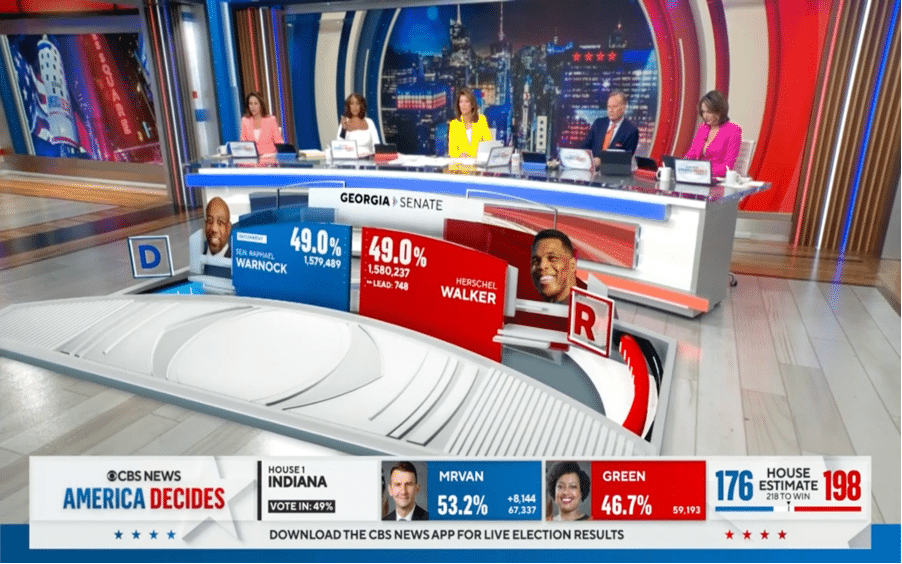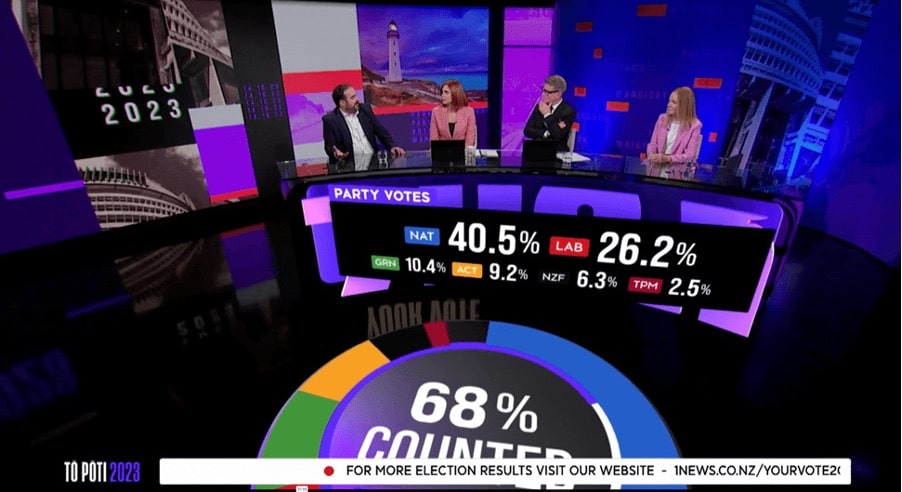2024 is one of the largest election years in history, with major elections happening globally. As an American, I’ll be voting and closely watching what happens in the U.S. while my adopted home of Norway has its elections in 2025. The technology behind covering elections has traditionally taken a major strategic leap during every U.S. general election. American broadcasters go the extra mile to create a spectacle that entertains as much as it informs, using large-scale augmented reality (AR), massive studios, and data-driven graphics that break down every key statistic and result.
All set to cover the 2024 Super Election Year?
Here’s how you can make the most of election graphics for storytelling in the digital and mobile age
What are going to be the top technology trends we see from broadcasters this year? Here are my predictions:
The Age of AI
AI is at the forefront of everyone’s thoughts now, especially with the upcoming elections. AI will permeate the technology used by broadcasters throughout the entire production chain for their live shows. This encompasses not only data analysis and distribution but also how journalists interact with on-air graphics, a topic I will touch on later.
We will also see numerous broadcasters promoting predictions and analyses based on AI. While these graphics may not appear distinct from others, they will employ language that imparts a sense of greater accuracy, aiming to earn viewers’ trust.
However, AI’s cultural impact also brings risks. Recent demonstrations by OpenAI’s Sora have introduced fake videos to the list of potential false and misleading media that voters will encounter. Generative AI enables troll farms to produce more disruptive content than ever before.
In response, media organizations will endorse verification technologies such as the Content Authenticity Initiative (C2PA) standard to bolster their efforts against misinformation stemming from AI.
The Gen Z Vote
The traditional big broadcast on your 4K TV now faces the challenge of reaching Gen Z viewers who primarily use devices and apps like Instagram, TikTok, and YouTube. Connecting with these young and valuable voters will be an experimental aspect of this year’s election coverage. What will the outcome be?
According to a recent poll by Vizrt, Gen Z is twice as likely to pay attention to content with on-screen graphics compared to other generations. Expect more diverse, graphics-heavy content specifically tailored for social channels—an experiment that doesn’t yet have established rules.
The majority of
Gen Z now opting to
Consume news on Social media

TikTok
identified as the most popular sources for keeping up to date with news and current affairs
Virtual Graphics Everywhere
As mentioned in my last point, Gen Z viewers generally pay close attention when graphics are used for storytelling, and broadcasters are increasingly focusing on this audience. Additionally, broader audiences are embracing and expecting the use of virtual graphics, as augmented reality (AR) becomes an integral part of our daily lives through apps and wearables.
We will see broadcasters prominently featuring virtual graphics in their coverage. This encompasses large outdoor augmented reality (AR) displays, studio AR set extensions, XR studios with massive video walls, and photo-realistic virtual sets enhanced by AI-generated set dressing and data-driven infographics. Key players in this field include Vizrt’s Viz Engine and Epic’s Unreal Engine.

It’s not only major broadcasters, but local broadcasters can also now more affordably utilize virtual sets and AR graphics using tools like Vizrt’s Viz Virtual Studio Go, which alleviate the financial, design, and expertise challenges associated with virtual productions. Additionally, new interactive capabilities enabled by AI, such as pose trackers, could empower presenters to manipulate virtual graphics in unprecedented ways.
HTML5’s Moment in the Sun
Competing with the high-fidelity graphics from major broadcasters will be local broadcasters and online channels using HTML5-based bread-and-butter graphics for tickers, lower thirds, and full screens.
HTML5 graphics are fast and user-friendly, especially when utilizing tools like Viz Data Connectors. The key information that the audience truly wants—the election results—can be presented in a clear and concise manner. HTML5 graphics can also be blended easily with AR graphics to provide a hybrid experience. Additionally, we’ll witness more direct viewer interaction through HTML5 polls.

Check out the Viz Flowics News Page
It’s All About the Data
Elections are complex beasts, brimming with huge amounts of data from every race. Consider the U.S. election: it encompasses not only the race for President, but also the Senate, Congress, governorships, sheriffs, mayors, and a diverse array of other local leadership positions. And let’s not forget the ballot initiatives, each unique to its region.
The challenge lies in how broadcasters dissect this data, striving to present it in a manner that’s accessible and comprehensible to the public. Achieving this feat is crucial during every election cycle.
Modern tools, like Viz Pilot Edge, come to the aid of journalists and designers, allowing them to visualize, analyze, and disseminate this wealth of information. From real-time data feeds to graphics, video walls, tickers, AR graphics, and websites, these tools transform the mountain of data into bite-sized nuggets for our television screens. AI as a prominent player, further simplifies the data, making it even more digestible for viewers.

Yet, beyond the numbers lies a narrative. By juxtaposing historical data with current election results, we paint a vivid picture of our ever-evolving society.
A Historic Tech-Forward Election Year
In 2024’s historic global election season, tech-forward election coverage will showcase AI-powered insights, expansive virtual graphics, data-driven and HTML5-enhanced reporting. Amidst these innovations, challenges will arise regarding battling ever more sophisticated misinformation and working towards engaging younger audiences via social media. The future of election coverage continues the balance of technology, audience needs, and responsible storytelling.



















